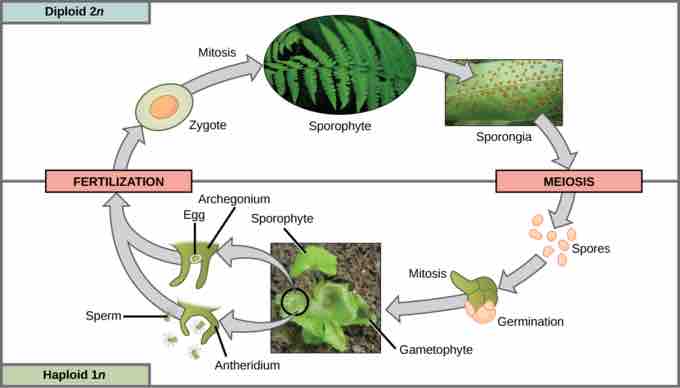Seedless Vascular Plants
The vascular plants, or tracheophytes, are the dominant and most conspicuous group of land plants. They contain tissue that transports water and other substances throughout the plant. More than 260,000 species of tracheophytes represent more than 90 percent of the earth's vegetation. By the late Devonian period, plants had evolved vascular tissue, well-defined leaves, and root systems. With these advantages, plants increased in height and size and were able to spread to all habitats.
Seedless vascular plants are plants that contain vascular tissue, but do not produce flowers or seeds. In seedless vascular plants, such as ferns and horsetails, the plants reproduce using haploid, unicellular spores instead of seeds. The spores are very lightweight (unlike many seeds), which allows for their easy dispersion in the wind and for the plants to spread to new habitats. Although seedless vascular plants have evolved to spread to all types of habitats, they still depend on water during fertilization, as the sperm must swim on a layer of moisture to reach the egg. This step in reproduction explains why ferns and their relatives are more abundant in damp environments, including marshes and rainforests. The life cycle of seedless vascular plants is an alternation of generations, where the diploid sporophyte alternates with the haploid gametophyte phase. The diploid sporophyte is the dominant phase of the life cycle , while the gametophyte is an inconspicuous, but still-independent, organism. Throughout plant evolution, there is a clear reversal of roles in the dominant phase of the life cycle.

Life cycle of a fern
This life cycle of a fern shows alternation of generations with a dominant sporophyte stage.